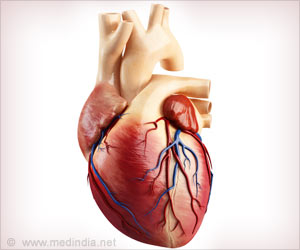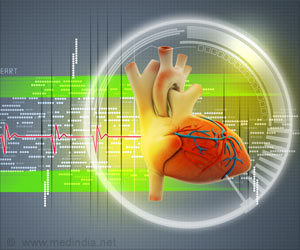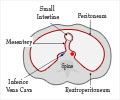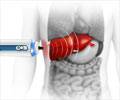Cardiac fibrosis was not only halted but also reversed by a caveolin-1 surrogate peptide (CSD) in a preclinical model.

‘The caveolin-1 surrogate peptide (CSD) was able to decrease the fibrotic ventricular wall thickness and improve heart function, all with apparently no toxicity and minimal off-target effects.’





CSD was able to decrease the fibrotic ventricular wall thickness and improve heart function, all with apparently no toxicity and minimal off-target effects.
The MUSC research team included pulmonary fibrosis investigators Stanley Hoffman and Elena V. Tourkina, Ph.D., who had previously shown caveolin-1's anti-fibrotic properties in the skin and lung. For this project, they joined forces with MUSC congestive heart failure researchers in the laboratory of Dhandapani Kuppuswamy to show that caveolin-1's anti-fibrotic properties in skin and lung also hold in yet another organ: the heart.
More than a decade ago, Hoffman and Tourkina noted that the skin and lung cells producing excess collagen in scleroderma, leading to fibrosis, were deficient in caveolin-1. Supplementing these cells with a caveolin-1 surrogate peptide (CSD; caveolin-1 scaffolding domain peptide), a truncated version of the original compound, showed a reversal of fibrosis.
MUSC has obtained a patent to test CSD on fibrotic diseases across organs which they have licensed to Lung Therapeutics, Inc. The company intends to support research involving CSD and fibrosis in the Hoffman and Kuppuswamy laboratories.
Kuppuswamy's laboratory focuses on hypertrophic overgrowth and profibrogenic signaling of the cardiac muscle in pressure overload. Fibrosis that develops under these conditions is detrimental to the heart's pumping efficiency as it causes a stiffer and less compliant cardiac muscle, leading to the progression of congestive heart failure.
Advertisement
To mimic the cardiac fibrosis typical of heart failure, Kuppuswamy used a transverse aortic constriction mouse model to create pressure overload hypertrophy that then led to the development of fibrosis. Treatment with CSD not only halted the progression of the cardiac fibrosis but also led to its reversal with improved ventricular function.
Advertisement
"Fibrotic diseases are related to each other no matter the affected organ. In our case, we were studying lung and skin fibrosis," explained Hoffman. "We got the opportunity to test the same reagent in heart fibrosis and, lo and behold, it worked even better than in lung and skin fibrosis models. And there are plenty of other diseases with a fibrotic element to them where we think the CSD peptide might be useful."
The co-authors thank the MUSC College of Medicine Enhancement of Team Science (COMETS) for helping support this work. Without this support, this work would not have been possible.
Source-Eurekalert














